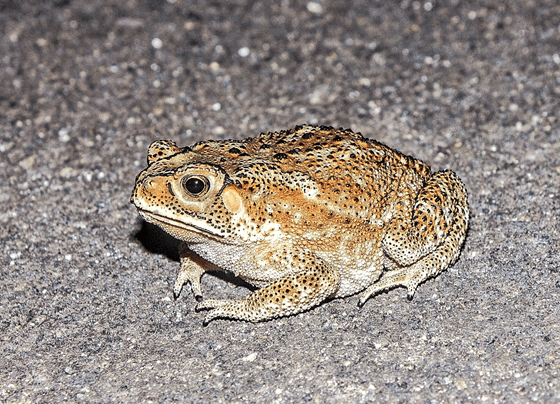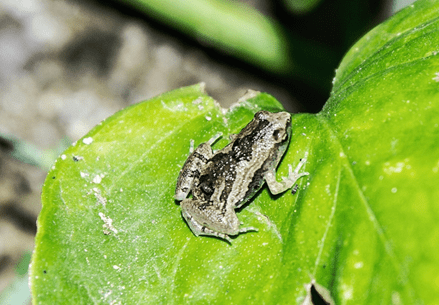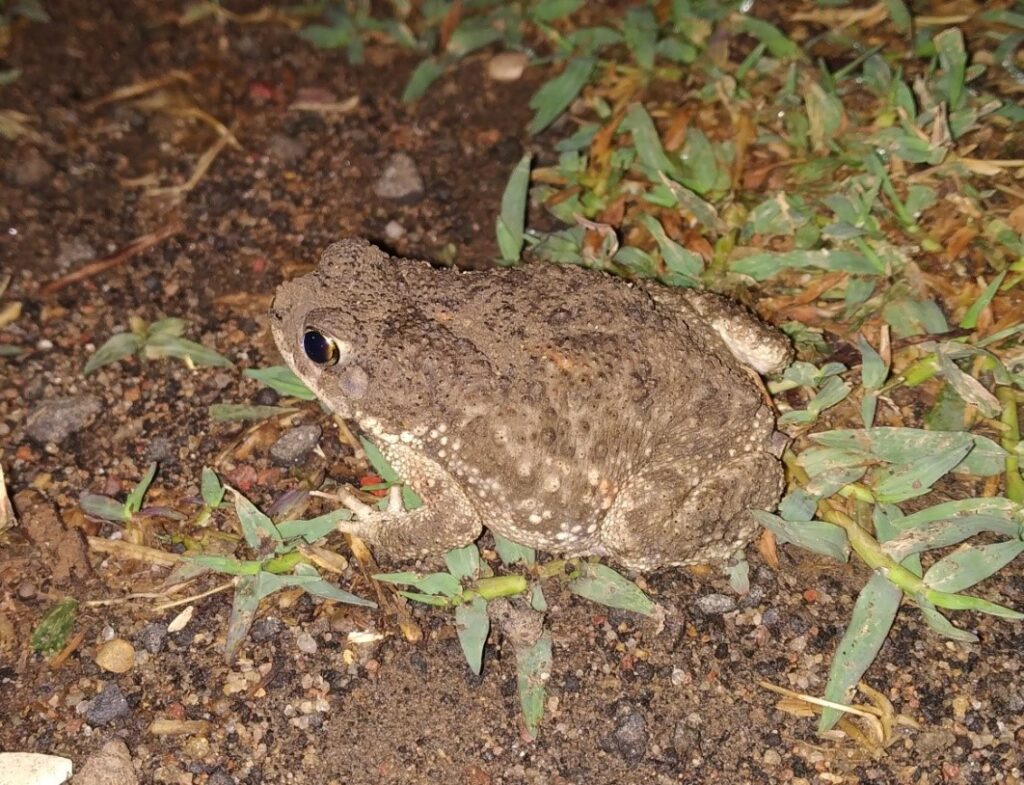It may sound a bit strange but frogs are an indispensable part of our childhood. Frogs make you reminisce those rainy days when we would just sit and watch their jumping expertise in the pool of water, listen to the orchestra of their croaking sounds, and not to mention their bulging eyes would amuse us.
Interestingly, frogs play an important role in our ecosystem, as they keep the ecosystem’s health in check in their own unique way— being an amphibian, they feed on algae, which helps them keep the water clean.
Perhaps not many of us know that there is a diverse variety of frogs found in the world. While few of them are endemic, some are common everywhere. Frogs have more than 6,000 species worldwide. In India, 380 species of frogs and toads have been recorded to date. In Central India, around 20 species of frogs and toads are recorded.
The past decade has seen a significant rise in the number of new amphibian species in India, particularly in the Western Ghats, which currently has more than 250 recognized species.
Let’s find out the types of frogs found in India –
Common Indian Toad (Duttaphrynus melanostictus)
As the name suggests, Common Indian Toads are seen commonly almost all through the year. These frogs have a poison gland on their head, which aids in protecting them from predators. These frogs are terrestrial, meaning living on the ground.

Common Skittering Frog (Euphlyctis cyanophlyctis) Found on still water bodies such as ponds, reservoirs, and lakes, Common Skittering Frogs skitter on the water when they are disturbed or threatened. Their webbed feet help them to swim. They prefer to stay in a group, and are mainly active during the night time.

Cricket Frogs (Fejervarya sp.) In spite of their small size, Cricket Frogs have very strong vocalization. They are known to be quite noisy and you can hear them even during the day time around water bodies. These species are indicators of macro habitats which is one of the reasons for complex diversity particularly in this group.

Indian Bullfrog (Hoplobatrachus tigrinus) Indian Bullfrog is a ferocious predator and the largest frog found in India. It can grow up to 200 mm in size and can weigh up to 3 kilograms. In the wild, we have seen them preying on a wide array of organisms such as insects, frogs, scorpions and even snakes. You can see them all year round close to perennial water bodies.

Indian Burrowing Frog (Sphaerotheca breviceps) As the name suggests, these frogs are good at making burrows. Burrowing ability is an important life skill which helps them survive during the harsh summer and winter of Central India. These frogs prefer being around leafy litter and rocky areas in dried regions. They are active during night time.

Painted Frog (Uperodon tarprobanic) As the name suggests, you can see a lovely reddish brown colour pattern on the back of these frogs, as if they were painted. They can lay eggs even in small puddles like in tree hollows and crevices, which are partially covered by vegetation. If not disturbed, you can spot them in the same spots for long periods of time. They get active soon after the first rain every year.

Ornate Narrow-mouthed Frog (Microhyla ornate)
Ornate Narrow-mouthed Frogs are difficult to spot in the wild due to their small size. They prefer to stay near the water bodies, streams, ponds or puddles. After the first few rains, you can hear them calling in a group throughout the night. You can hear them in the day time as well, in dense vegetations near streams or ponds.

Indian Tree Frog (Polypedates maculates)
Indian Tree Frogs change their colour from dark brown to pale brown as per the season. You will find these frogs taking shelter in bathrooms, water tanks and wet places during harsh winters and summers. These frogs have suction adhesive pads at the end of toes which give them the ability to climb trees, smooth walls and even glass windows.


Marbled Balloon Frog (Uperodon systoma)
Another frog from the narrow-mouthed family, Marbled Balloon Frog is fossorial in the nature. These frogs mainly feed on termites and ants. It is assumed that such a food habit may have led them to lose teeth during the evolution of this species. One of the identification marks of these frogs is pale marbling on the back, while other few are like indistinct tympanum.

Indian Balloon Frog (Uperodon globulosus)
Like other burrowing frogs, Indian Balloon Frogs are mainly visible during the monsoon season; for rest of the year, they prefer to hide underground. These frogs can be seen in most of the habitats in central India. Although these frogs are purplish in colour due to mud and insufficient light during the night, they appear much darker in the colour when spotted in the night.

Variegated Ramanella (Uperodon variegate)
Another interesting frog from the narrow-mouthed frogs endemic to India is Variegated Ramanella. The other common name of this frog is ‘termite nest frog’, which suggests its preferred habitat – they prefer to stay in a tunnel system of big termites. These frogs lay eggs inside dark tree hallows and crevices.
Red Narrow-mouthed Frog (Microhyla rubra)
Red narrow-mouthed frogs prefer to hide in the burrows for most part of the year. Thus, it’s not so easy to spot them. The only time you can see these frogs is at the onset of monsoon. These frogs are smaller in size with reddish patch on the back. Males have black throat which is visible during breeding season. Females are bigger in size in comparison to males without the black mark on the throat.
Jerdon’s Bull Frog (Hoplobatrachus crassus)
Jerdon’s bull frogs are quite similar to Indian Bull Frogs and also share the same habitat, which is baffling when it comes to identification of the species. However, one can differentiate between the species by looking at the length of hind legs and fingers (metatarsals) along with the size and number of tubercles on it.

Reddish Burrowing Frog (Fejervarya refescens)
Reddish Burrowing Frog shows reddish colouration of the skin during breeding season. These frogs are seen near the water bodies in grass lands during the monsoons. After the rains, these frogs take shelter below rotting logs, rocks or sometime burrow deep in the ground until the next rain. They have a kind of a digging apparatus on their hind legs which helps in burrowing.

Marbled Toad (Duttaphrynus stomaticus)
Marbled Toads are terrestrial toads that prefer the arid belts and cultivation areas. However, you can even spot them sharing the same habitat as Common Indian Toad. One can differentiate Marbled Toad by the key characters, such as flat poison glands, medium sized tympanum, and absence of black mark above the eye.

Mysticellus franki
Mysticellus franki, the narrow-mouthed frogs, appear for less than four days just for breeding purposes and remain hidden for the rest of the year. Therefore, they are known to be mysterious frogs. They are endemic to the Western Ghats of India, where they are known to be found in Wayanad District of northern Kerala.
Shrub frogs (genus Raorchestes)
There are various shrub frogs that have been discovered in different regions of India – According to research, the new species were identified on the basis of their DNA, external morphology, behaviour, calling pattern, and other natural history annotations.
Raorchestes drutaahu (Fast-calling Shrub Frog) was found in Kadalar in Idukki district and Siruvani in Palakkad district of Kerala.
Raorchestes kakkayamensis (Kakkayam Shrub Frog) was seen only in the locality of Kakkayam dam in Kerala.
Raorchestes keirasabinae (Keira’s Shrub Frog) is a distinctive tree frog that inhabits the highest canopy layers. It’s found in the Agasthyamalai and Anamalai hills in the southern Western Ghats.
Raorchestes sanjappai (Sanjappa’s Shrub Frog) is a green shrub frog, which was found in the Wayanad region of north Kerala.
Raorchestes vellikkannan (Silver-eyed Shrub Frog) was found in the Siruvani hills and neighbouring regions of the Silent Valley National Park.
According to research, more than 80% of the shrub frogs known worldwide are found in the Western Ghats.
Rice Frogs or Chorus Frogs (Microhyla)
The research team from the University of Delhi and Zoological Survey of India (ZSI) found a new species of frog in Arunachal Pradesh—Microhyla, the subfamily of Microhylinae. They are narrow-mouthed frogs, popularly known as ‘Rice Frogs’ or ‘Chorus Frogs’. They reportedly have 49 recognised species, and were discovered from riparian habitats in the main evergreen forest of the Namdapha Tiger Reserve of Arunachal Pradesh.
Fun Facts About Frogs
- A group of frogs is called an ‘army’.
- Most of the frogs can absorb water through their skin.
- Frogs are extremely adaptable, which is why they can be found in deserts, coastal areas, tropical rain forests, high altitudes, and possibly everywhere, except Antarctica.
- All toads are frogs but all frogs are not toads.
- Frogs typically eat any living thing that fits into their mouths, which includes worms, spiders, bugs, slugs, larvae and also small fish. A frog’s tongue can take its prey into its mouth within 15/100ths of a second.
- Few frogs can freeze during harsh winter and can come back to life in spring.
- Few brightly coloured frogs are very poisonous and are lethal to human beings. In India, we don’t have poisonous frogs which are lethal to humans. Some of such species are found in Amazon forests.
- Tree frogs and tree toads are very good climbers. Few of them never even touch ground in their life time.
- Some frogs can change colours or camouflage according to light, temperature, humidity, and surroundings.
- Evolution has given frogs the ability to diversify at micro as well as macro level to overcome food competition.
- Evolutionary roots of few frogs suggest their co-existence from the Jurassic era.
- The biggest frog in India is the Indian Bull Frog, it is also the bulkiest. It can grow up to 15 cms (6 inches) in length and can weigh up to 3kgs.
- The largest frog found in the world is the Goliath frog, which measures 13.5 inches long.
- The smallest frog is the gold frog, which is only 0.39 inches long.
World Frog Day
The World Frog Day is observed every year on 20th March with an idea of raising awareness about different species of frogs and to protect them from extinction.
Amphibians are cold-blooded and they cannot survive under harsh sun or in a windy atmosphere. Their skin is of a peculiar kind, which requires them to survive in only specific living conditions. Consequently, amphibians begin to die as soon as their habitats are disturbed or contaminated in any manner.
Today, more than half of all frog species are under the threat of extinction. Indian amphibians are also endangered, as they have to deal with habitat loss and degradation.
Click Here to hear the call of Fungoid Frog
Click Here to hear the call of Cricket Frog
Edited by Renuka Walter
As you plan your wildlife escape to India, get in touch with our trip curators at Pugdundee Safaris.
Call us at: +91-9718637711, +91-8800637711 Email: enquiry@pugdundeesafaris.com
We promise you a wildlife experience that is unique, authentic and unforgettable.
